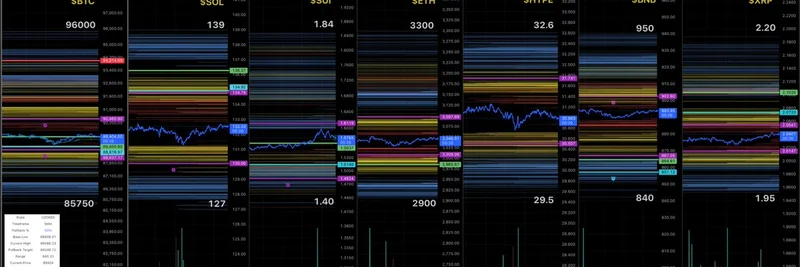Hey there, crypto enthusiasts! If you’ve been keeping an eye on the latest buzz in the blockchain space, you might have stumbled across a thought-provoking tweet from 0xngmi on July 7, 2025. The post highlights a growing concern in the decentralized finance (DeFi) world: it’s no longer enough to just audit protocols to ensure the total value locked (TVL) is legit. Instead, we need to build infrastructure to continuously audit the entire chain of assets because, well, some folks are sneaking in fake assets. Let’s break this down and explore why this matters, especially for those of us diving into the wild world of meme tokens and blockchain tech.
What’s TVL, and Why Does It Matter?
First things first—let’s talk about TVL. Short for "total value locked," TVL is a key metric that shows how much cryptocurrency value is staked or locked in a DeFi protocol or blockchain. Think of it like the lifeblood of a protocol: the higher the TVL, the more popular (and often, the safer) it seems. For example, if a protocol has 10,000 ETH locked and each ETH is worth $2,000, that’s a $20 million TVL. Pretty impressive, right? You can dig deeper into this on sites like Webopedia, which explains how TVL helps investors gauge a protocol’s health.
But here’s the catch: TVL isn’t foolproof. It’s just a number, and if the assets behind it are fake, the whole system could be a house of cards. That’s where 0xngmi’s point hits home—audits need to go beyond a one-time check.
The Fake Asset Problem
So, what are these "fake assets" we’re talking about? Imagine someone creating a counterfeit token that looks legit but has no real value. Scammers can pump up a protocol’s TVL by injecting these fakes, making it seem more trustworthy than it is. This isn’t just a hypothetical issue—Datavisor warns about fake crypto exchanges and scams that trick users into losing their funds. In the DeFi space, similar tricks can happen with assets, and it’s a growing headache for the industry.
Replies to 0xngmi’s tweet echo this concern. Lord KryFiKairos suggests that protocols should prove the origin and traceability of their collateral on-chain, while BetSwirl humorously points out that "fake assets [are] everywhere." It’s clear this is a hot topic, and the community is calling for action.
Why Continuous Auditing Is the Future
Traditional audits—where experts check a protocol once or twice a year—aren’t cutting it anymore. Blockchain moves fast, and so do the bad actors. Continuous auditing means building tools and infrastructure to monitor assets in real-time, ensuring every token’s journey from creation to lockup is legit. This idea ties into what EY Global discusses about auditing digital assets, emphasizing the need to evaluate blockchain protocols and their risks, like smart contract flaws or oracle errors.
For meme token fans, this is especially relevant. Many meme coins rely on hype and community trust, but if fake assets sneak into their ecosystems, it could tank their value overnight. Continuous auditing could help protect these quirky tokens and keep the DeFi space thriving.
What This Means for Blockchain Practitioners
If you’re a developer, investor, or just a curious crypto newbie, this shift toward continuous auditing is a game-changer. It’s a call to action to build better tools, like on-chain trackers or AI-powered audit systems, to keep the ecosystem honest. Plus, it’s a reminder to look beyond flashy TVL numbers and dig into a protocol’s security—something Investopedia highlights when explaining on-chain transactions.
At Meme Insider, we’re all about helping you stay ahead in this fast-evolving world. Whether you’re into meme tokens or serious DeFi projects, understanding these trends will empower you to navigate the blockchain landscape with confidence. So, what do you think—ready to demand more transparency in crypto? Drop your thoughts in the comments, and let’s keep the conversation going!

